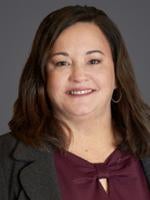On October 14, 2022, California Department of Public Health (CDPH) Director Tomás J. Aragόn issued a State Public Health Officer order further clarifying the definitions of “close contact” and “infectious period” to provide entities and individuals with strategies for working together in a post-COVID-19 workplace. The order is part of CDPH’s overarching health, economic, and safety framework for industry and business sectors, Beyond the Blueprint.
Workplaces continue to be places where COVID-19 infection is a risk. To assist individuals and entities with understanding the quarantine and isolation periods recommended (but not mandated) by the CDPH, the CDPH has issued the following new definitions via the order of October 14:
Close Contact
“Close contact” means sharing with a person, whether symptomatic or asymptomatic, during the person’s infectious period, the same indoor space or outdoor space for fifteen minutes over a twenty-four-hour period, whether that fifteen minutes occurs in one unit of time, or over a series of incremental periods. Close contact in an outdoor space is defined as being within six feet of an infected person for that fifteen-minute cumulative period.
Indoor Space
“Indoor space” is defined as less than or equal to 400,000 cubic feet per floor. (Examples include a home, a clinic waiting room, or an airplane.) Spaces such as offices or waiting areas fully separated with floor-to-ceiling walls are considered distinct indoor air spaces.
Outdoor Space
“Outdoor space” means more than 400,000 cubic feet per floor. (Examples include open-plan offices, warehouses, large retail stores, manufacturing, or food processing facilities.)
Infectious Period for a Symptomatic Person
The infectious period for a symptomatic person runs from two days before symptoms appeared, through the tenth day, counting from the date of the first appearance of symptoms, plus an additional twenty-four hours after there is no fever without fever-reducing medications, and symptoms have improved. If, however, the person tests negative on the fifth day or later, then the twenty-four hours may start on the date of the negative test, from the fifth day or later.
Infectious Period for an Asymptomatic Person
The infectious period for an asymptomatic person runs from two days before the positive specimen collection date, through the tenth day after that positive specimen, or any day from the fifth day through the tenth day, if a negative test is obtained. In other words, a negative test after the fifth day stops the infectious period on that date for asymptomatic persons. There is no twenty-four-hour holding period tacked on, as with a symptomatic person.
In addition, the order reiterates in its preface that there remain three “mandatory” aspects of guidance for the public as follows:
-
All individuals must utilize the updated Guidance for the Use of Face Coverings (effective September 23, 2022). However, that guidance indicates that entities and individuals may use the U.S. Centers for Disease Control and Prevention’s (CDC) community levels of infection rates to make decisions on masking, consistent with the CDC’s August 11, 2022, updated recommendations. This is a less stringent standard than the previously worded “strong recommendation,” and it allows discretion based upon a consideration of the community levels of disease as monitored and published by the CDC.
-
Recommendations and requirements for mega events remain in place unchanged. That is, the CDPH’s recommendations that were effective on April 1, 2022, as a “strong recommendation” (as opposed to a mandate) for vaccine verification or proof of negative tests for attendees at indoor mega events remain in effect.
-
Recommendations and requirements for K-12 schools in California, as set forth by the CDPH, also remain in place unchanged. (As of March 11, 2022, the universal masking requirement for K-12 schools and childcare settings)
In other words, the prior three mandated recommendations are, in substance, not mandates but less stringently enforced recommendations provided by the CDPH in keeping with the current less deadly outcomes of COVID-19 viral infection and the effectiveness of vaccination programs. The CDPH continues to recommend vigilance in the workplace and the application of protective measures using the federal CDC community standards—and these definitions—to determine exposure in the workplace and recommended quarantine policies.
The State Public Health Officer Order of October 14, 2022, supersedes prior State Public Health Officer Orders dated August 28, 2020, July 13, 2020, May 7, 2020, and March 19, 2020.
Elizabeth Rhodes also contributed to this article.



 i
i


